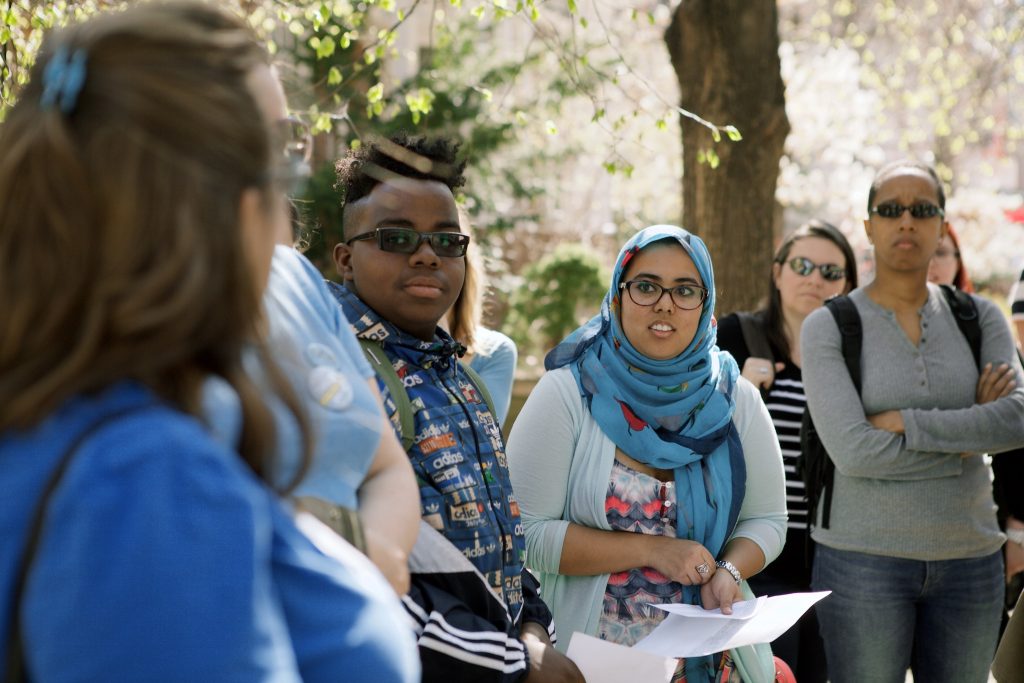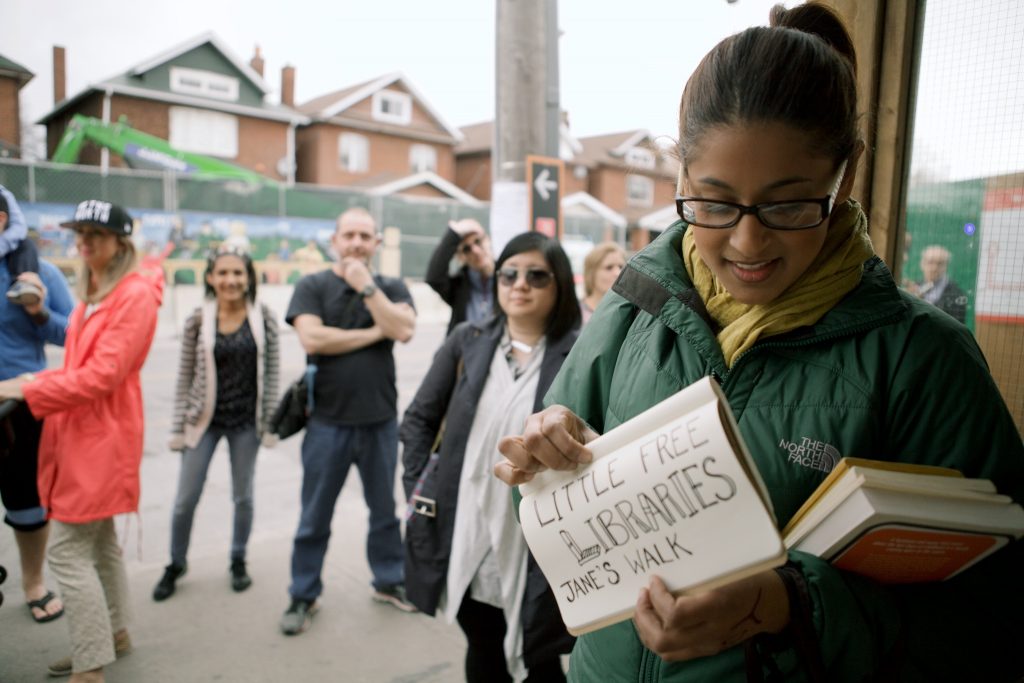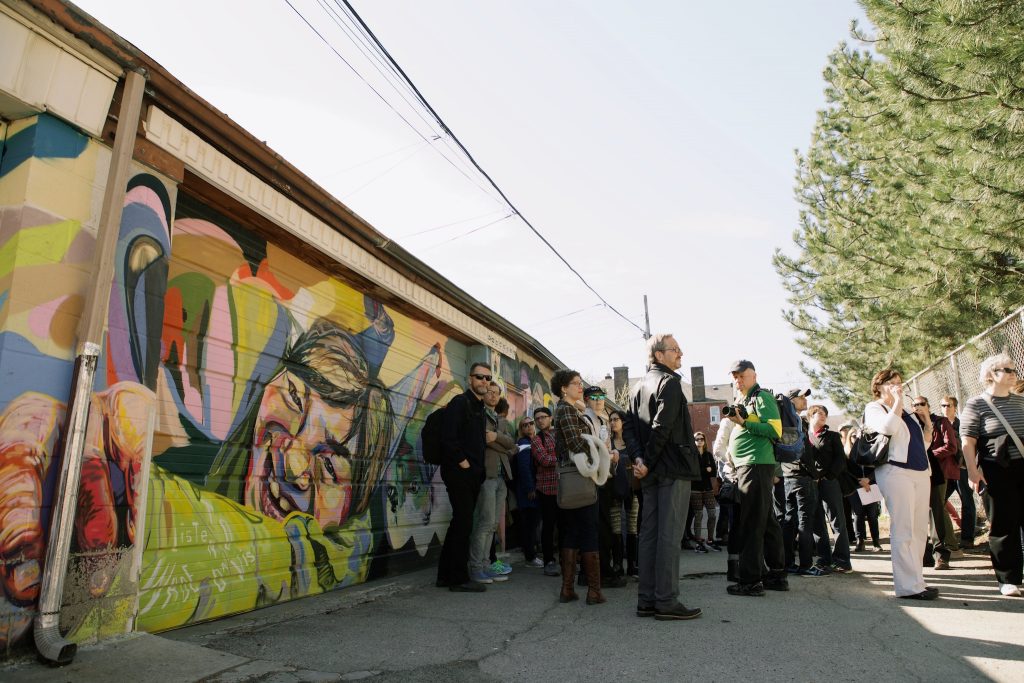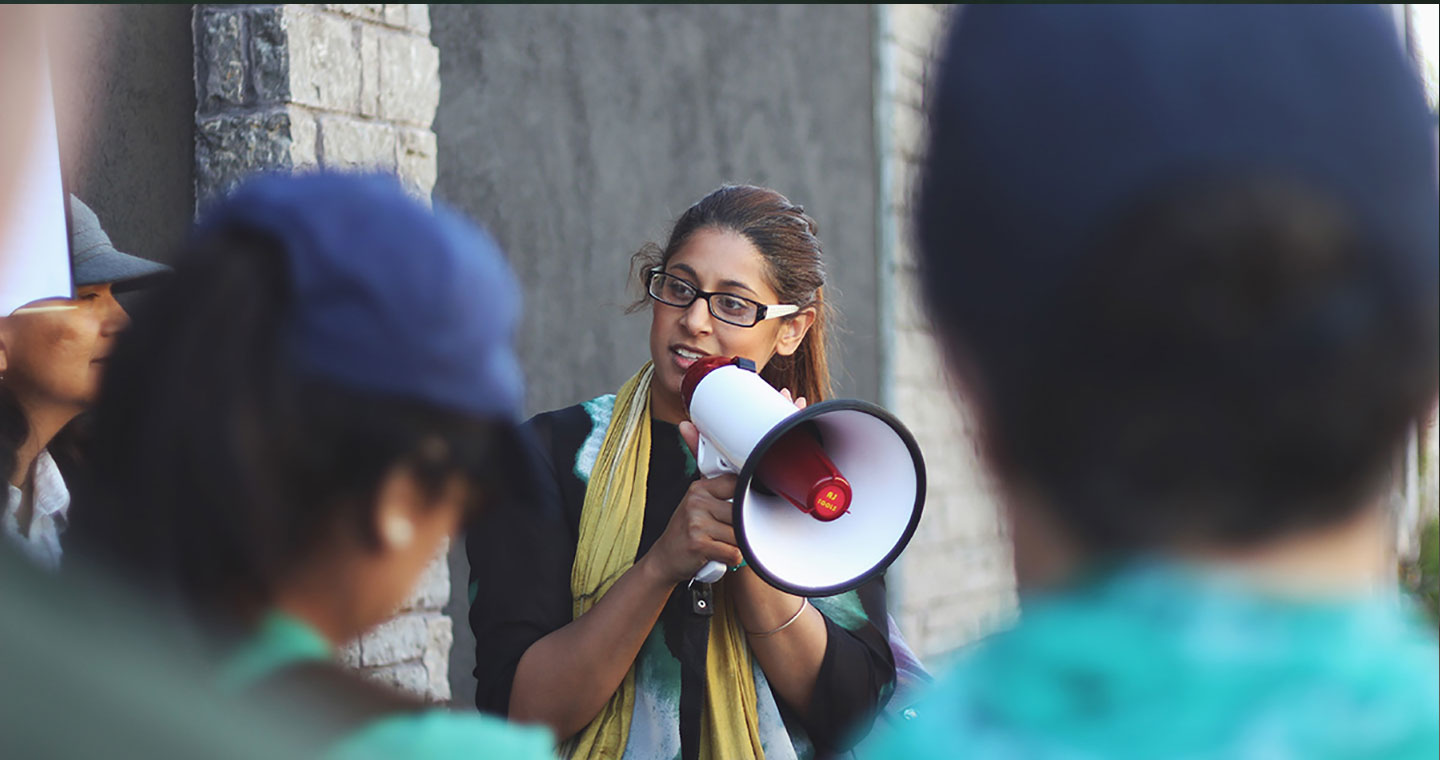Aug 15, 2016
Careening down a dirt road in Agra, India, Denise Pinto received a phone call that changed her life forever and almost caused her taxi driver to veer right off the road—she was invited to join the leadership team at Jane’s Walk. Out of excitement, Denise clapped her hand to the driver’s arm, causing him to yelp in Hindi. Fortunately, the road was empty and, three years later, Denise is still working as the Global Director of Jane’s Walk today.
Jane’s Walk is one of the longest running projects on MakeWay’s shared platform. It is a unique, citizen-powered movement that promotes informed participation in civic life through free, locally organized, walking tours.
Inspired by author and activist Jane Jacobs and premised on the idea that everyone is an expert on the places they live, work, and play—Jane’s Walk encourages people to get together to explore, talk about, and celebrate their neighbourhoods. Jane’s Walk advances the concept that local perspectives are essential in building inclusive and thriving towns and cities. Since Denise came on board, Jane’s Walk has grown from participation in 85 cities around the world to over 200 each year.

The power of a simple idea
Having completed her Master of Landscape Architecture at the University of Toronto, Denise had delved into professional practice—mostly master planning for cities overseas. Although this kind of regional design was fascinating, she felt disconnected from the community impact of the work.
Her transition to Jane’s Walk allowed her to really get on the ground to participate in a model that she had long admired for its ability to engage average citizens in civic conversations.
After returning from that trip exploring her ancestral home in India, she began meeting with the constellation of people that make up Jane’s Walk.
“My first meeting with the Jane’s Walk Steering Committee did not feel like an interview, but rather, a room full of kindred minds. I asked a ton of questions about everything related to the project—funding, sustainability, participation, outreach. I walked away thinking what a transformative project this was. I was eager to be part of it but knew I had more questions than answers.”
She kept asking questions and was eager to find out what people’s needs were. “I asked: What is a Jane’s Walk? What does it mean to you? How does it differ from a traditional walking tour? Why is the project important?”
“People said the most amazing things. People said:
- ‘Jane’s Walk is for people who live in the city but maybe don’t live on my block so they can understand what my neighbourhood is like. This way, they can stop listening to the way the media talks about my neighbourhood and can understand it through my eyes.’
- ‘Jane’s Walk is a way that we get to be face-to-face because we never get to see our neighbours anymore. I used to live in Europe where I knew all the people who lived on my street and then I moved to Canada where that was missing. But through this program of walking tours I have met my neighbours and made so many friends.’
- ‘Jane’s Walk is about knowing that you know things.’”
“I really quickly learned it wasn’t a project I was running, but a project I was stewarding. I was running behind and making sure everyone had the supports that they needed and making sure people were connected to who they needed to be connected to. But the beauty and brilliance of Jane’s Walk is that it is so self-organizing. I didn’t understand then, and I still don’t totally understand now, but there’s something about the power of a simple idea that is transcendent.”

Finding community on the shared platform
Jane’s Walk is one of nearly 40 social change projects on MakeWay’s shared platform. MakeWay pioneered the shared platform model in Canada in 2000, recognizing that many grassroots initiatives struggle to drive real-world change while managing the demands of a stand-alone charity.
Like Jane’s Walk, the shared platform operates on a simple premise: sharing for greater impact. Projects share important administrative resources and expertise, enabling more time and money to go towards achieving greater impact.
“The most valuable part of the shared platform is the relationships I have with MakeWay’s project management team. The platform is not only about infrastructure for me, but the relationships and the support I have from an incredible team. They have all done work with other projects who are facing the same challenges I’m facing. Even if the projects are at a different scale or in a different sector, it helps to get clues about how to be more effective and drive greater impact,” said Denise.
Speaking to being a part of the community of MakeWay projects, Denise said, “Recently, it’s been wonderful to be able to reach out to other projects and foster some community building between us. So anytime we run up against a wall and we are trying to navigate which direction to go, we have a consortia of projects who are all working in the ‘social good’ space to learn from. In the same way that Jane’s Walk creates a peer network—the most valuable and high impact thing the shared platform offers is a community.”

From Tehran to Nashville and beyond
While Jane’s Walk originated in Toronto, the beauty of the growing global movement is that people in different parts of the world can easily start a walk in their city and adapt it to suit their culture. And they have.
From Tehran, Iran to Nashville, Tennessee, cities are falling in love with this simple idea of bringing people together to learn about and celebrate their neighbourhoods.
“We’ve now seen a decade of walking in community with neighbours. What have we learned and where are we going? And how can we support an even more enriching experience?” said Denise.
New things on the horizon for Jane’s Walk include an itinerary builder to help participants plan their walks and an impact reporting tool which will provide a rollout of what happened in each city.
When asked how she sees Jane’s Walk evolving, Denise said, “My sense is that it’s growing into a tool for social justice and helps make equitable civic space. We have credibility now as a network of local leaders who are ready to help their communities. Moving forward we are intentionally inserting ourselves more into civic process so we can move the needle.”
“At the heart of it we ask everybody to provide their own perspective and whether or not there is agreement or whether or not there is consensus, that doesn’t matter. Cities are complex places with lots of competing interests. We are going to have to understand how to reconcile and balance those competing interests if we are going to build equitable places for everybody.”
“Jane’s Walk is ultimately whatever story you are telling—it is a litmus test for what the community is feeling. You are a community member and your story is worth telling.”

Jane’s Walk is one of over 60 innovative social change projects on MakeWay’s shared platform. You can help Jane’s Walk create thriving, livable, and walkable cities here.
